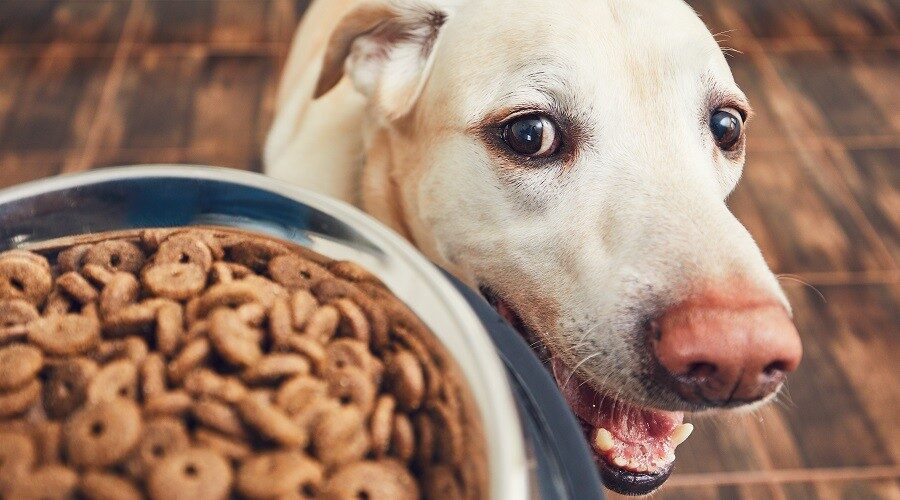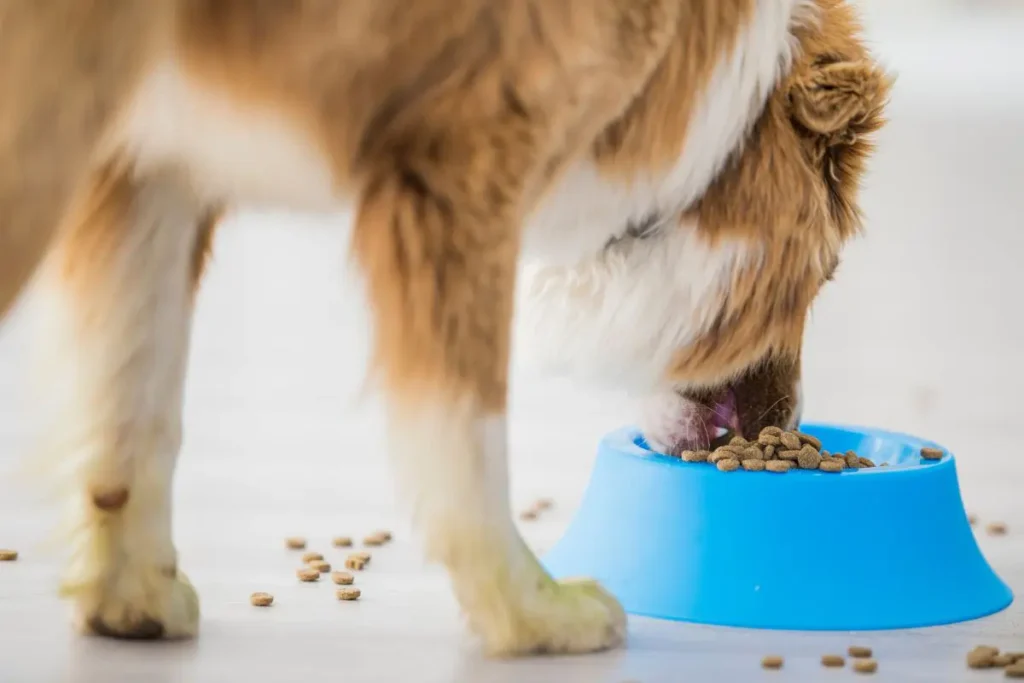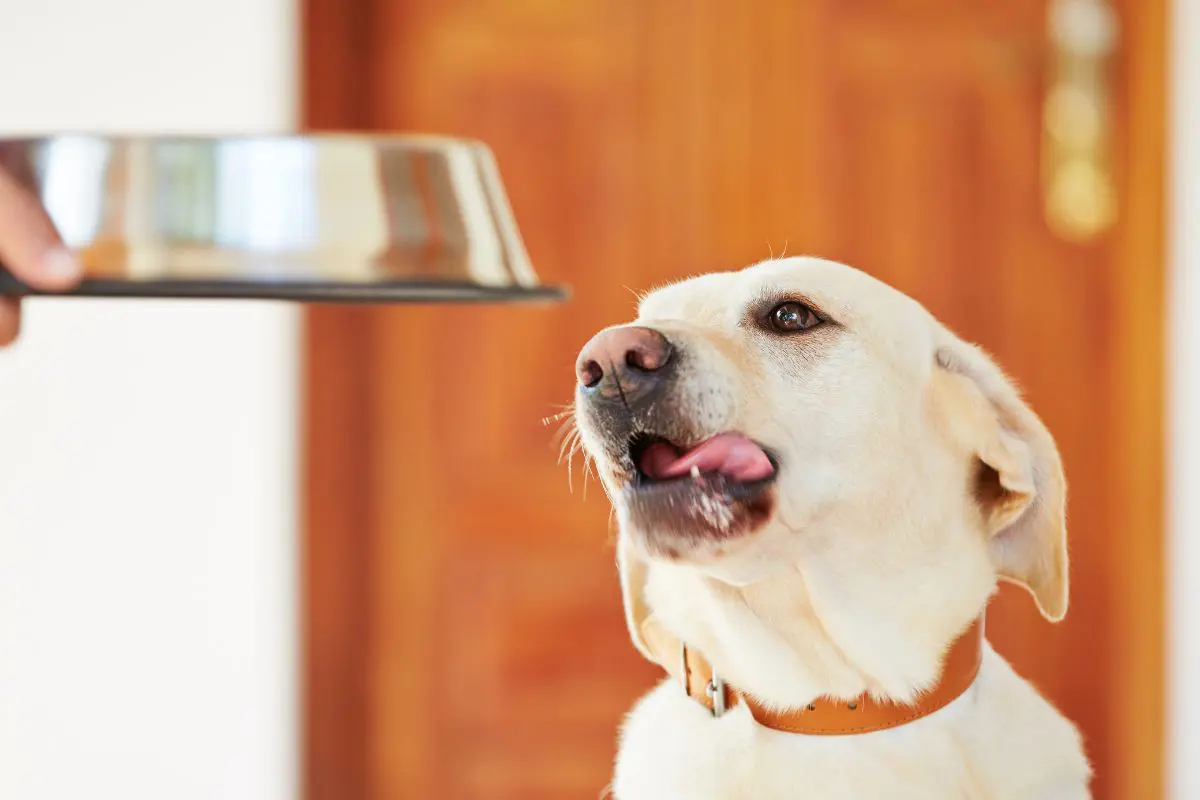Best Dog Food For Anal Gland Issues
Choosing the right food for your dog can play a major role in preventing and managing anal gland issues.
Knowing which foods are best for your pup can help make sure that your pup stays healthy and happy.
In this blog post, we’ll be discussing what to look for in high-quality Best Dog Food For Anal Gland Issues, as well as some of the best foods available on the market today.
What Are Anal Glands Issues?

Anal glands, also known as anal sacs, are two small glands located on either side of the anus in dogs and cats. These glands produce a strong-smelling fluid that is used for scent marking and communication.
Normally, the anal glands empty naturally when the dog or cat defecates. However, sometimes the glands can become impacted, infected, or inflamed, leading to a variety of issues.
Here are some of the common anal gland issues:
- Impaction: This occurs when the anal glands become blocked and the fluid cannot be released. This can be caused by a variety of factors, such as:
- Dietary issues: Soft stools or diarrhea can prevent the glands from emptying properly.
- Allergies: Allergies can cause inflammation in the anal glands, making it difficult for them to empty.
- Narrow anal gland ducts: Some dogs and cats are born with narrow anal gland ducts, which can make it difficult for the fluid to drain.
- Infection: If an impacted anal gland is not treated, it can become infected. This can be very painful for the animal and can lead to an abscess.
- Symptoms of an infected anal gland include:
- Scooting or dragging the rear end on the ground
- Licking or biting at the anus
- Redness, swelling, or pain around the anus
- Discharge from the anus
- Symptoms of an infected anal gland include:
- Abscess: An abscess is a collection of pus that forms in an infected anal gland. Abscesses are very painful and can rupture, causing a foul-smelling discharge.
If you think your dog or cat may have an anal gland issue, it is important to see a veterinarian right away. Early diagnosis and treatment can help prevent complications.
Best Dog Food For Anal Gland Issues
While there isn’t a single “best” dog food for anal gland issues, there are certain dietary factors that can contribute to healthier anal gland function in dogs. Here are some key points to consider:
Focus on fiber:
- High-fiber diets can help promote firmer stools, which puts more pressure on the anal glands during defecation, naturally expressing them. This can be beneficial in preventing impaction.
- Good sources of fiber for dogs include:
- Pumpkin: A readily available and easy-to-digest source of fiber, canned pumpkin (not pie filling) can be added to your dog’s food in moderation.
- Sweet potato: Another excellent source of fiber, sweet potato can be roasted or boiled and mashed into your dog’s food.
- Apple: Apples contain both soluble and insoluble fiber, which can aid digestion and promote firmer stools.
- Wheat germ: A concentrated source of fiber and essential fatty acids, wheat germ can be sprinkled on your dog’s food in small amounts.
- Flaxseed: Rich in both soluble and insoluble fiber, flaxseed can be ground into a powder and added to your dog’s food. However, it’s important to note that flaxseed can interfere with nutrient absorption in some dogs, so consult with your veterinarian before introducing it to your pet’s diet.
Also Read: Why Does My Dog Rub His Face on Me [7 Reasons]
Symptoms Of Anal Glands Issues In Dogs
- Scooting: This is the most common symptom, and it involves the dog dragging its rear end on the ground in an attempt to relieve discomfort.
- Excessive licking or biting at the anus: This can be a sign of irritation or pain in the anal gland area.
- Straining to defecate: This can be caused by pain or discomfort associated with impacted or infected anal glands.
- Redness, swelling, or pain around the anus: This can be a sign of infection or inflammation.
- Discharge from the anus: This can be a clear, yellow, or bloody discharge.
- Foul odor: The fluid from the anal glands has a strong odor, but if it becomes infected, the odor can be even more noticeable.
If you notice any of these symptoms in your dog, it is important to see a veterinarian right away. Early diagnosis and treatment can help prevent complications.
How To Treat Anal Glands Issues In Dogs
Treating anal gland issues in dogs depends on the severity of the problem. Here’s a breakdown of potential approaches:
1. Expressing the anal glands:
- This is the most common treatment for impacted anal glands. A veterinarian or, in some cases, a pet owner trained by the vet, will manually express the glands to release the accumulated fluid.
- Important note: Attempting to express anal glands yourself without proper training is not recommended. It can be painful for the dog and potentially worsen the situation.
2. Medication:
- Antibiotics: If the anal glands are infected, your veterinarian will likely prescribe antibiotics to combat the infection.
- Pain relievers: Depending on the severity of the discomfort, pain medication might be prescribed to provide relief for your dog.
3. Dietary changes:
- A high-fiber diet can help bulk up stool and promote natural expression of the anal glands during defecation. This may involve adding fiber-rich ingredients like pumpkin, sweet potato, or psyllium husk to your dog’s food.
- Consult your veterinarian before making any significant dietary changes, especially if your dog has underlying health conditions.
4. Warm compresses:
- Applying warm compresses to the affected area can help reduce inflammation and provide temporary pain relief.
5. Surgery:
- In chronic or severe cases, surgery may be recommended to remove the anal glands entirely. This is usually a last resort and should only be considered after discussing all other options with your veterinarian.

Can High Fiber Diet Resolve An Existing Anal Gland Impaction?
Anal gland impaction can be a painful and uncomfortable experience for dogs. Fortunately, there are ways to help reduce the risk of this condition, including high fiber diets.
High fiber diets add bulk to the stool and help to increase the rate of passage through the digestive tract. This can help to prevent constipation, which can lead to anal gland impaction.
High fiber diets can be found in many commercially available dog foods. Additionally, some foods that are high in fiber include pumpkin, sweet potatoes, and oats.
Adding these ingredients to your dog’s diet can help to reduce the risk of anal gland impaction. If your dog already has an impaction, your vet may recommend a high fiber diet as part of the treatment plan.
If you’re looking for the best dog food for anal gland issues, you should look for a food that is high in fiber. Pumpkin, sweet potatoes, and oats are all great options to add to your pup’s diet.
Additionally, there are many high fiber dog foods available on the market today. It’s important to speak with your vet before making any changes to your dog’s diet to make sure that the food you choose is appropriate for your pup’s health.
Why High Fiber Diets Help With Anal Gland Problem?

When it comes to anal gland issues in dogs, diet is often the key to prevention and relief. One of the most important dietary components for dogs with anal gland issues is fiber. High fiber diets help to bulk up your dog’s stool which can help to keep their anal glands properly emptied.
Fiber adds more volume to the stool, allowing it to pass more easily through the anal glands. High-fiber diets are also often high in nutrient content, providing your pup with all the necessary vitamins and minerals they need for optimal health.
Fiber also helps to regulate the digestive system, leading to fewer digestive issues, which can in turn reduce the occurrence of anal gland issues.
Fiber can also help to reduce inflammation in the body, which can help to alleviate anal gland discomfort. Fiber helps to slow down digestion, allowing your dog to more easily process and eliminate their food, which can help to reduce the strain on the anal glands.
When it comes to choosing the best food for your dog with anal gland issues, look for a food that is high in fiber and provides your pup with a balanced diet.
If you’re unsure of what to look for, consult your veterinarian for advice. With the right diet and regular vet visits, you can help to keep your pup’s anal glands healthy and happy.
Also Read: 20 Things Your Deceased Pet Wants You To Know In 2024
Conclusion
For dogs suffering from anal gland issues, The Bottom Line is an ideal choice of dog food. This grain-free, high-fiber formula is designed to help support normal stool formation and reduce the risk of anal gland impaction.
The Bottom Line contains probiotics, prebiotics, and omega-3 fatty acids to help promote a healthy digestive system and overall wellness. Plus, it is made with natural ingredients such as chicken, sweet potatoes, and peas, and is free from corn, wheat, and soy.
Furthermore, The Bottom Line is free from artificial colors, flavors, and preservatives, making it a great choice for dogs with sensitive stomachs.
With its wide range of health benefits, The Bottom Line is a great option for dog owners looking for the best dog food for anal gland issues.
FAQs On Best Dog Food For Anal Gland Issues
1.What causes anal gland problems in dogs?
Main culprits:
- Dietary issues: Lack of fiber, food allergies/sensitivities
- Anatomical factors: Narrow ducts, breed predisposition
Contributing factors:
- Bowel irregularities: Diarrhea, constipation
- Obesity: Weak anal sphincter muscles
- Skin issues: Allergies, infections
- Less common: Underlying health conditions
2. Can food cause anal gland issues in dogs?
Yes, food can definitely contribute to anal gland issues in dogs in several ways.
3. Do carrots help dogs glands?
Carrots can potentially benefit dogs’ anal glands in some ways, but they are not a guaranteed solution or cure for any anal gland issues.
4.How can I help my dog with anal gland problems?
Immediate action:
- See a veterinarian: They can diagnose the problem, express glands if needed, prescribe medication, and recommend dietary changes.
- Avoid expressing glands yourself: Leave it to professionals to avoid causing pain or worsening the issue.
Prevention:
- High-fiber diet: Add fiber-rich ingredients or switch to high-fiber dog food.
- Regular exercise: Promote healthy digestion and regular bowel movements.
- Maintain healthy weight: Obesity can contribute to anal gland problems.
- Monitor anal area hygiene: Keep the area clean and dry.
- Early intervention: Address any signs of anal gland issues promptly.
5. Can a high-fiber diet help to keep a dog’s anal glands healthy?
Yes, a high-fiber diet can potentially help keep a dog’s anal glands healthy by promoting natural expression and reducing the risk of impaction.
6. Can wet dog food help to relieve anal gland problems in dogs?
Wet dog food may contribute to relieving anal gland problems in dogs indirectly, but it’s not a guaranteed solution and should not be solely relied upon.
7. Can pressure on the anal gland affect a dog’s comfort?
Yes, pressure on the anal glands can definitely affect a dog’s comfort and cause them distress.
8. How can I ensure my dog’s diet supports healthy anal glands?
To promote healthy anal glands, focus on high-fiber diets with real ingredients, proper portion control, and adequate hydration. Consult your vet for personalized advice and addressing underlying issues. Remember, diet may not be the sole solution.

